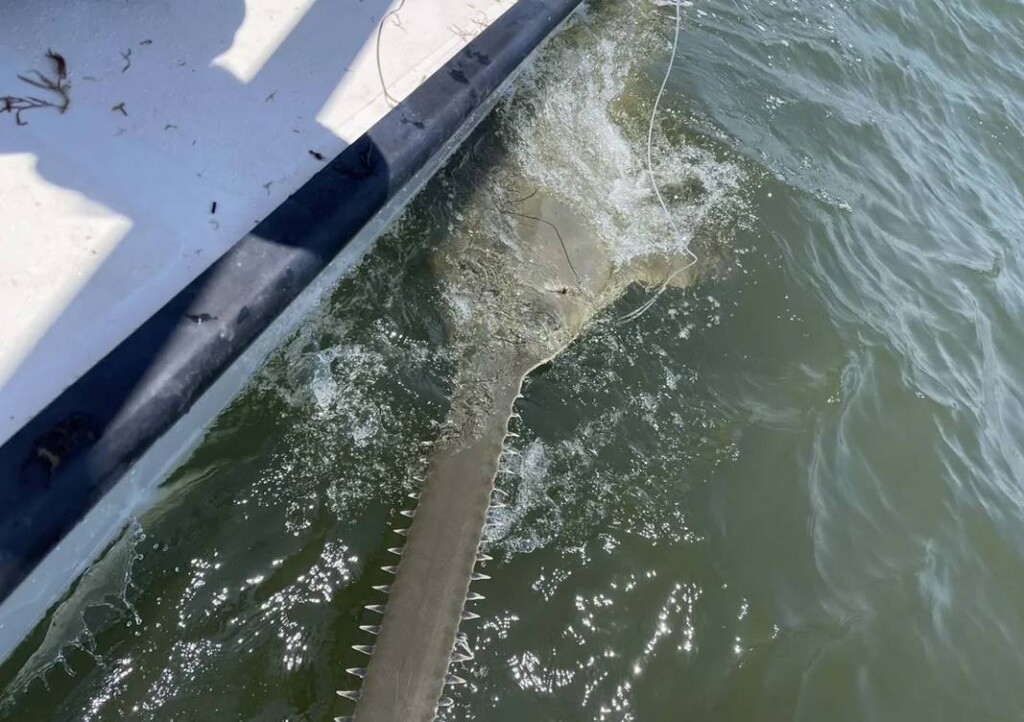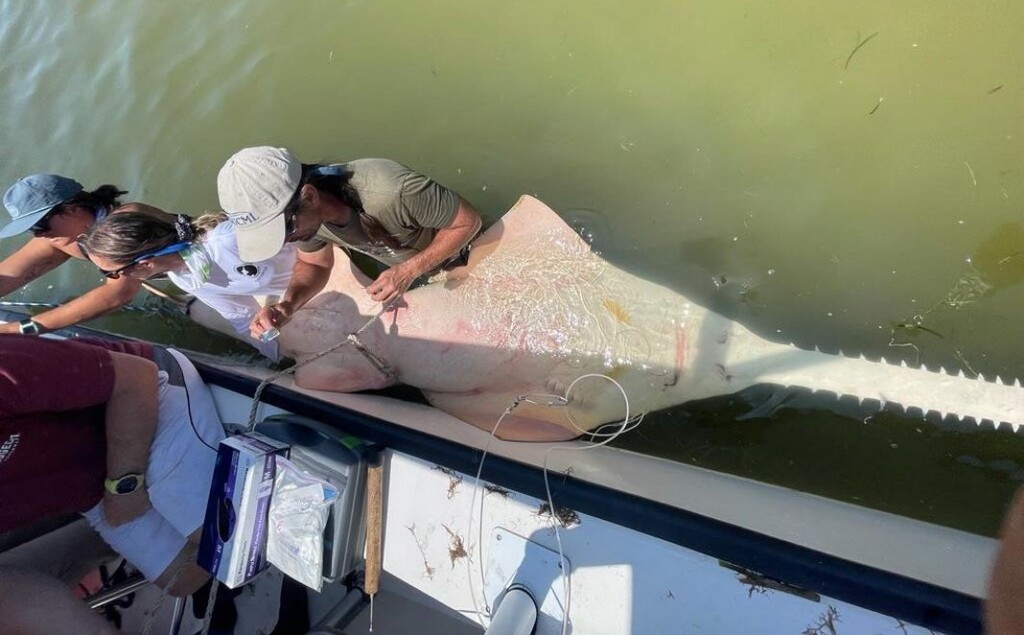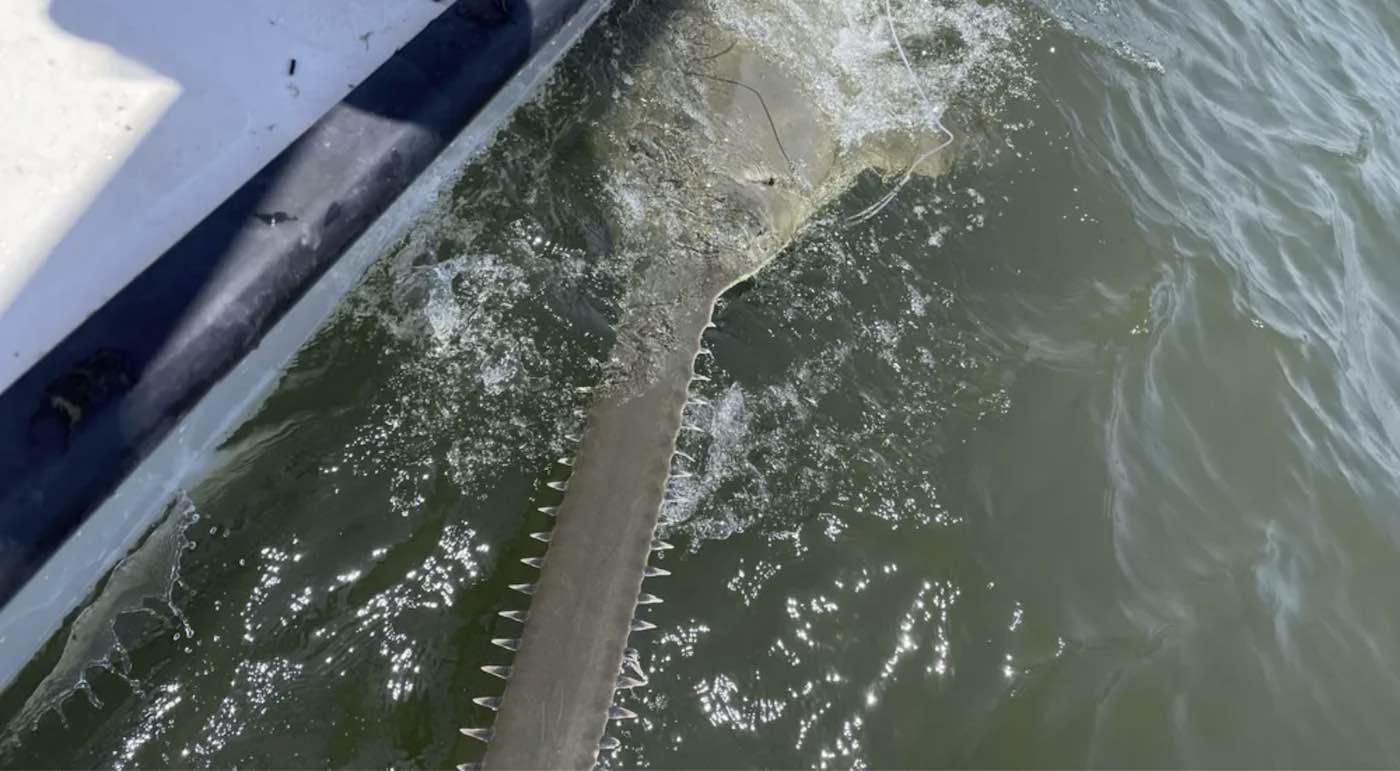
While on a fishing trip with some students, hoping to be able to teach them about the habits of sharks, a scientist in Florida landed 13 feet of jagged-faced hope.
Up from the depths of Cedar Key came a mature female sawfish, a bizarre relative of the ray with a chainsaw for a nose (called a rostrum), and an animal that almost went extinct in the US.
Dean Grubbs, a marine ecologist at Florida State University, was hoping to be able to catch a juvenile shark, perhaps a nurse shark, for the students on board his boat. But when the line jerked in the sheltered gulf waters southwest of Gainsville, Grubbs had a hunch as to what was on the other end.
“I was pretty sure this was a sawfish, but I remained stone-faced because I didn’t want to disappoint the students if I was wrong,” Grubbs says in a statement. “I saw the tail before the rostrum, so I lost my calm at that point and screamed ‘Sawfish! It’s a sawfish!’”
Once they had it secured alongside their boat, one of the students returned to the shore to get a tagging device which they hadn’t imagined that they’d need for anything. It was the first sawfish to be tagged in Cedar Key in over 30 years.
Once widespread in the US southeast, sawfish numbers plummeted due to a variety of factors. They were the first native freshwater fish to be put on the Endangered Species List.
The tagging will allow the biologists to track the animal for 10 years to see where it spends its time. Grubbs and his colleague were encouraged to see that the animal was female and that she had mating scars: she was reproducing.

MORE GOOD FISH NEWS: True ‘River Monster’ of the Amazon Has Recovered Thanks to New Sustainable Fishing
Sawfish nurseries tend to be found in the calm waters under and around mangrove trees—like near Tampa Bay, south of Cedar Kay where three juveniles were recently found at a place called Rattlesnake Key.
Both Cedar and Rattlesnake keys would have had plenty of sawfish at the turn of the 20th century, and a belief is forming that they are returning to old haunts as part of a slow, steady recovery.
“What’s remarkable to me is that they’re creeping back into exactly the previous habitats and range from which they’ve been extirpated,” Gavin Naylor, director of the Florida Museum of Natural History’s shark research program, says in the statement. “It’s as if they have a deeply embedded knowledge of where to go.”
Grubbs told Newsweek that he believes the population is recovering after the ESL listing, as well as additional measures like increased protection for mangroves and a ban on gill nets which the sawfish rostrums were famous for getting trapped in.
SHARE This Remarkable Catch And Positive Trend With Your Friends…




















